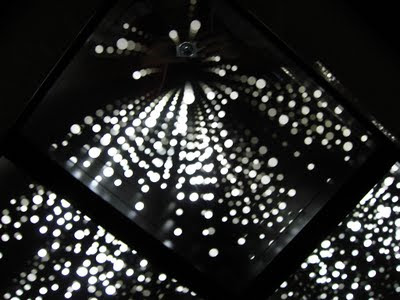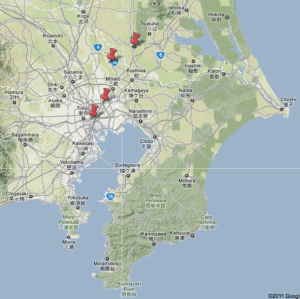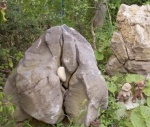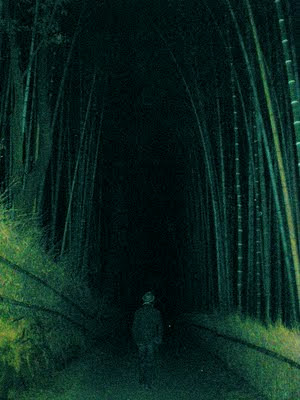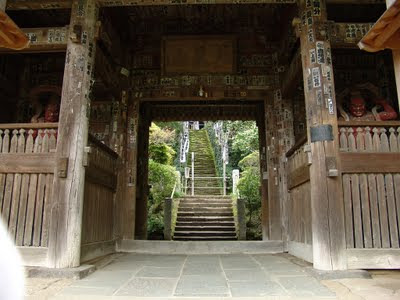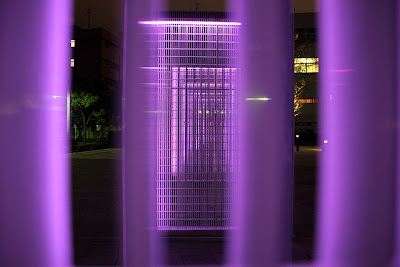From The Magick & The Mundane » Bujinkan by Shawn Gray
I. Intro
The Bujinkan martial arts training theme for 2007 was the Kukishin Ryu tradition. (There is some debate over which term is best to use, Kukishin Ryu or Kukishinden Ryu, and Hatsumi Sensei uses both of these seemingly at random. I am going to use “Kukishin Ryu” in this article for the sake of convenience.)
The meaning of the term “Kukishin” is one that causes discomfort for some, as it involves a word usually translated into English as “demon,” – the term “Kukishin” being composed of the characters for “9 – Demon – Spirit[s] (九鬼神)”. Depending on your religious background and upbringing, this can be the source of a certain amount of trepidation. “See?” you’ll hear some say, “What further proof do we need that at the real heart of Japanese martial arts lurks all kinds of darkness and evil?” Unfortunately, the modern English term “demon” has taken on quite a different meaning from the way it was first used in past millennia, and it is this modern understanding of the word which causes some red flags to go up.
This article will first look at early uses of the term “demon” in the West in order to help us more fully understand some of the things that Sensei is referring to when he uses the corresponding Japanese term “oni” in training. We will next look into some psychological principles derived from the demon idea which we can use to make our lives happier and more balanced. (Yes, you read correctly.) In the final part of the article (Part II, separate post), we will look at principles of Japanese geomancy related to the demon motif, and some taijutsu ideas which can be interpreted in light of those principles.
II. From Daemon to Demon – And Back Again
In one of the first classes of 2007, Hatsumi Sensei pointed out that when he is talking about “oni,” he is referring not to an evil spirit, but to a neutral part of the human psyche which can be put to either good or negative use. This is essentially the same concept as that of the Greek term “daemon” (or another Latinized version, “daimon”), from which we get our modern word “demon.” Originally, the Greek term referred to both good and malevolent spirits. In early Christian times, “the usage of ‘daemon’ in the New Testament’s original Greek text caused the Greek word to be applied to a Judeo-Christian spirit by the early 2nd century AD.” In Greece and Rome, daemons could be either good or evil. Socrates claimed to have a daemon that served to warn him against mistakes. The Hellenistic Greeks called the good spirits kalodaemons and the evil spirits kakodaimons. The kalodaemons were a type of guardian angel which would watch over mortals. (“Thus eudaemonia, originally the state of having a eudaemon, came to mean ‘well-being’ or ‘happiness.’”) The Romans used the term genius to refer to the same type of benevolent, guiding and protecting spirit. In Plato’s Symposium, Socrates is taught that love itself is a good daemon. It wasn’t until the end of the 4th century, when Christianity became the dominant force in the Roman world, that the meaning of the word was changed to refer only to forces of an evil nature. Sensei’s definition of “oni (鬼)” is thus very similar to the original neutral meaning of the English word daemon.
Though the word gradually took on an ominous meaning through the Middle Ages and into the 20th century, modern technology has gone back to adopt the original usage in referring to certain pieces of computer software. These are familiar to anyone who works as a system administrator. In a computer server environment, a daemon is a program that runs continuously in the background, ready and waiting for the right conditions for it to begin performing its task.  Normally the right condition is met by a request for its service, for example a network connection of some kind. When such a request is made, the daemon automatically goes to work and performs its assigned task, normally an intermediary role between a client and a server. It then switches back into stand-by mode when the task has been completed. The FreeBSD operating system has made use of this motif in the design of its mascot, a cute little red fellow with horns, a pointy tail, and a pitchfork – affectionately named Beastie.
Normally the right condition is met by a request for its service, for example a network connection of some kind. When such a request is made, the daemon automatically goes to work and performs its assigned task, normally an intermediary role between a client and a server. It then switches back into stand-by mode when the task has been completed. The FreeBSD operating system has made use of this motif in the design of its mascot, a cute little red fellow with horns, a pointy tail, and a pitchfork – affectionately named Beastie.
III. Kill ‘Em With a Smile
As training opened for 2007, Sensei hung up a big piece of calligraphy at the front of the dojo, which read, “Kuki Taishou (九鬼大笑)”. The “Kuki” is the familiar “9 Demons,” and the kanji for “Taishou” have the meaning of “Big Smile (or Laugh)”. In explaining the meaning of this, Sensei pointed out that the word taishou can also be written with the kanji for “Commander (or General) (大将)” There were a few confused faces in the dojo – what is the connection between demons, a commander, and a big smile?
From the perspective of psychology, humans have daemons (in the classical neutral sense) as part of their psyche. In a manner similar to the daemons used in modern computer systems, the daemons of the psyche act as intermediaries between the conscious and the unconscious mind. When there is an external request for an internal resource, the daemon goes to work and sees to it that the particular emotional or psychological resource that it is responsible for is provided to the requester – normally an external stimuli of some kind. When someone insults you, a daemon can go and fetch an offended response. When someone compliments you, a daemon can go and fetch a reaction that is either egotistical or humble. The type of reaction that the daemon returns with will depend on how that daemon has been “programmed.” We could perhaps define a daemon as a kalodaemon (“good” daemon) or a kakodaemon (“bad” daemon) depending on how it has been initially programmed and installed (its condition at birth) or how the program has been altered (by external or internal influences) since then. Daemons will do what they have been programmed to do. They will fetch the emotional reactions that they have been programmed or reprogrammed to fetch. What if one finds that he or she doesn’t like what the daemons are bringing out in response to external requests? A person can at this point choose to reprogram the daemon so that it responds as the person would like it to. Instead of returning an offended reaction to an insult, the daemon can be made to return a peacemaking response. Instead of returning an egotistical response, the daemon can be told to bring out a humble one. How does one reprogram the daemons and bring them under control like this?
The key that Sensei referred to lies in both the reading of the kanji for taishou and also in the design of many traditional Japanese oni masks. The Commander (or General) reading of taishou (大将) tells us that we have to be in charge and in control of ourselves. It is our responsibility to take control of our lives and put our insides in order. Sensei stated that “we should become ten to control the nine.” Ten is a complete, balanced number and crowns the nine below it as a diadem on the head of a monarch. The daemons should be doing what we want them to – which may or may not align with the way they are currently operating. If they are not acting in accord with how we would like them to, it is our right and responsibility to invoke the role of Commander to impose the rule of order on the system of our Selves. Our personalities should work the way we want them to, so that we do not become the victim of our own vices, but so that we can instead live as complete and balanced human beings.  This correlates closely to the Qabalistic idea of the 10 Sephiroth, or spheres, in which the flow of energy down to the lower spheres stems from and is, or should be, controlled by the higher spheres. In fact, on the Qabalistic glyph known as The Tree of Life (shown here on the right) , the highest sphere is called Kether, which means “crown”, and the lowest sphere is called Malkuth, which means “kingdom”. In the classic medieval grimoire known as The Book of the Sacred Magic of Abramelin the Mage, now translated as The Book of Abramelin, the aspirant is taught a method of establishing a relationship with a spiritual entity known as “the Holy Guardian Angel”, which some interpret to be the Higher, or Divine, Self. Once this relationship is established, the aspirant is then directed to conjure up a long list of demons and, under the authority of the Holy Guardian Angel, compel them to obedience and servitude. From the point of view of modern psychology, this can be interpreted as the integration of the personality and subsequent processing of complexes, neuroses, etc through the Light of this integration. The “Holy Guardian Angel” is of the same archetype as the Taishou Commander. It is that aspect that knows what our Path, the true course of our life, is meant to be, and which has the authority to bring all aspects of our lives into order and balance under it’s direction. By bringing all under the auspices of the the integrating and balancing forces of the Crown (Kether), the Kingdom (Malkuth) may be ruled with balance and equanimity.
This correlates closely to the Qabalistic idea of the 10 Sephiroth, or spheres, in which the flow of energy down to the lower spheres stems from and is, or should be, controlled by the higher spheres. In fact, on the Qabalistic glyph known as The Tree of Life (shown here on the right) , the highest sphere is called Kether, which means “crown”, and the lowest sphere is called Malkuth, which means “kingdom”. In the classic medieval grimoire known as The Book of the Sacred Magic of Abramelin the Mage, now translated as The Book of Abramelin, the aspirant is taught a method of establishing a relationship with a spiritual entity known as “the Holy Guardian Angel”, which some interpret to be the Higher, or Divine, Self. Once this relationship is established, the aspirant is then directed to conjure up a long list of demons and, under the authority of the Holy Guardian Angel, compel them to obedience and servitude. From the point of view of modern psychology, this can be interpreted as the integration of the personality and subsequent processing of complexes, neuroses, etc through the Light of this integration. The “Holy Guardian Angel” is of the same archetype as the Taishou Commander. It is that aspect that knows what our Path, the true course of our life, is meant to be, and which has the authority to bring all aspects of our lives into order and balance under it’s direction. By bringing all under the auspices of the the integrating and balancing forces of the Crown (Kether), the Kingdom (Malkuth) may be ruled with balance and equanimity.
The other reading of the word taishou describes how the role of Commander should be implemented – with “a great smile (taishou, 大笑).” When we look at Japanese oni masks, we most often see that they have big smiles. They thus offer us the key to their management and control. A genuine smile is the sign of a relaxed mind and a calm spirit. It also indicates flexibility in thinking. Conversely, a stern, stiff expression usually indicates inflexibility of thought, whether it is just at that moment or whether it is an indication of a general condition. When we find ourselves responding to things in a way that we don’t really want to, the response is often accompanied by a stress or tension of some kind, because it is in opposition to the way that we would really like to be reacting. When we smile, our expression softens and our mind relaxes, becoming more flexible and open to new ideas and thus more open to new and alternative ways of reacting to a given situation.
A smile gives us a calm heart and allows us to make even, solid, well-balanced judgments. This idea of a calm and tranquil heart in the face of trying circumstances is known in Japanese as heijoushin (平常心). Smiling helps us to achieve and maintain this state. Most often we smile in reaction to something positive. Something has made us happy, so we smile. This is well and good, but in this case the smile is a reactive response to something. Many people forget that we can also use the smile in a proactive way. In Commander mode, we can use a smile to proactively change ourselves in a positive way, both inside and outside. We are so used to smiling in connection with a happy feeling that the two have are inextricably linked. When we are happy, we smile. And so it is also that when we smile, we become happy. Even if something has happened that would cause us to have an adverse reaction, we can change our mental reaction if we smile. The next time something happens where you would usually get irritated, annoyed, or angry, force yourself to smile. You’ll find that the physical act of smiling tends to make you feel calm, balanced, and much more positive. No longer a victim of your own emotions, you have taken the daemon by the horns with your smile and made a proactive decision as Commander about what reaction the daemon is going to give to this particular circumstance. Like all things, it takes time and practice, but the more of a habit you make it, the more you will find your mental state characterized by the heijoushin principle and the more your personal daemons will act in accordance with your will and desired behavior.
This topic will be continued in Part II.
BIBLIOGRAPHY
- Wikipedia: http://en.wikipedia.org/wiki/Daemon_(mythology)
- Wikipedia: http://en.wikipedia.org/wiki/Daemon_%28computer_software%29


…
